Have you ever had a copper pipe burst? It can be a real pain to fix, but with the help of Sharkbite fittings, it’s a lot easier than you might think. In this blog post, we’ll walk you through the process how to fix copper pipe with sharkbite. We’ll also discuss some of the benefits of using Sharkbite fittings for copper pipe repair. So, if you’re dealing with a burst copper pipe, keep reading for instructions on how to fix it using Sharkbite fittings.
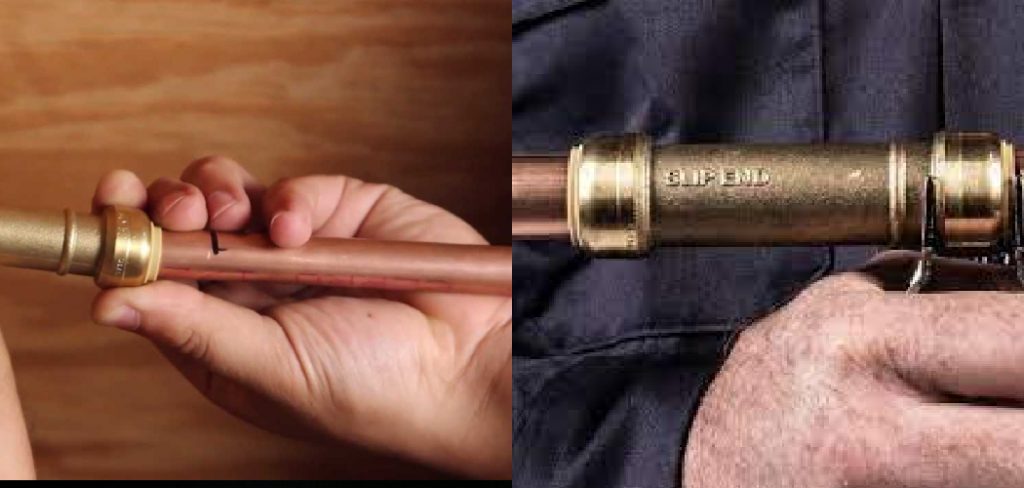
It’s always a good idea to have a few plumbing tools on hand, just in case of an emergency. But, if you ever find yourself with a copper pipe leak, don’t worry – there is a simple fix. All you need is a Sharkbite connector and some plumbers tape. Please read this post to learn how to do it yourself.
Summary: If you have a copper pipe that’s been bitten by a shark, there are a few things you can do to fix it. You can use a metal snake to clean the inside of the pipe and remove any chunks of metal that may be lodged in the pipe. You can also use a copper braid to create a seal around the pipe, preventing water from entering and damaging the pipe.
What Is Copper Pipe
One of the most popular types of plumbing pipes used in homes today is copper pipe. Copper is an excellent material for plumbing because it is extremely durable and has a natural resistance to corrosion. Over time, copper pipes can develop a patina, or a greenish-blue film, that can give your home’s plumbing a unique look.
Copper pipe is an excellent conductor of heat, making it ideal for use in radiant heating systems. However, it is important to note that copper pipe is not recommended for use in areas where the water has a high acidity level, as this can cause the pipe to corrode.
If you are considering using copper pipe in your home’s plumbing, be sure to consult with a professional plumber to determine if it is the right choice for your home. Copper has a tendency to expand, as well as corrode over time. A licensed plumber will be able to judge if your plumbing needs are sufficient for copper piping.
Types of Copper Pipe
There are two types of copper pipe – rigid and flex. Rigid copper pipe is most often used for supply lines, while flex copper pipe is typically used for drain, waste, and vent lines.
Rigid copper pipe is a type of pipe that is made from a single piece of copper tubing. The advantage of rigid copper pipe is that it can be cut to fit exactly where it needs to go, making it very easy to install. However, because it is a single piece of pipe, it is also more likely to develop leaks at the joints.
Flex copper pipe is made from a length of copper tubing that has been wrapped in a coil. It is then held together with metal or plastic ties. The advantage of flex copper pipe is that it is much more flexible than rigid copper pipe, making it much easier to work with. However, because it is made from a length of tubing, it is also more likely to kink or become damaged if not installed properly.
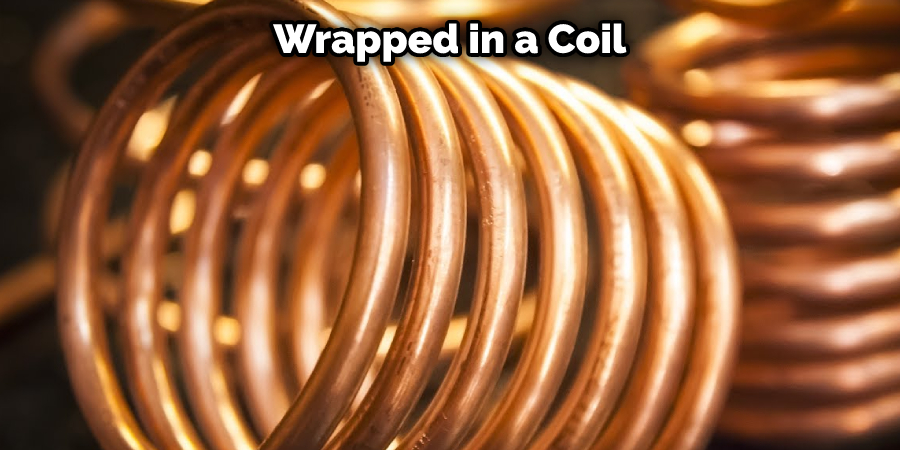
Can You Use Shark bites on Copper Pipes?
SharkBite fittings are not meant to be used on the copper pipe. SharkBite is a brand of push-to-connect fittings, also called Copper Pipe Fittings or CPF. These fittings are compatible with PEX, PE-RT, HDPE, and brass pipes. Install a SharkBite fitting, and the pipe does not need to be cut, soldered, or glued. Instead, the fitting is pushed onto the pipe and locked into place.
There are many reasons why you shouldn’t use SharkBite fittings on the copper pipe. First, SharkBite fittings are not approved for use with a copper pipe by any major plumbing code.
Second, the copper pipe and the SharkBite fitting are two dissimilar metals. This can cause corrosion, which can lead to leaks. Finally, SharkBite fittings are not as strong as copper fittings and are more likely to fail.
If you need to repair a copper pipe, we recommend that you use a copper fitting. Copper fittings are approved for use with the copper pipe by all major plumbing codes. Copper fittings are also stronger than SharkBite fittings and less likely to fail.
Tools and Materials
- Sharkbite connector
- Plumbers tape
- Copper pipe (rigid or flex)
- Pipe cutter (if using rigid copper pipe)
7 Easy Ways on How to Fix Copper Pipe With Sharkbite
1. Shut Off the Water to the Affected Area
The first step is to shut off the water to the affected area. This will prevent any further water damage and allow you to work on the repair without making a mess. Next, use a wrench to turn the water shut-off valve clockwise until it is fully closed.
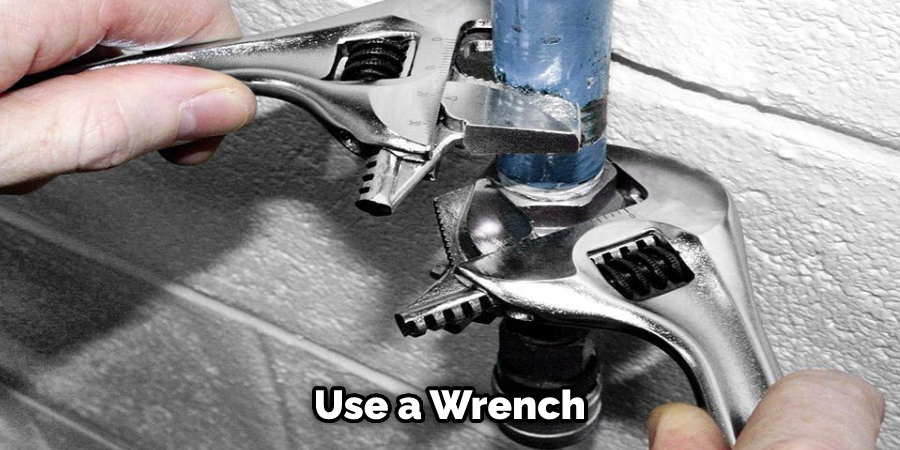
2. Cut Out the Damaged Section of the Pipe
Once the water is shut off, you will need to cut out the damaged section of the pipe. You can do this with a hacksaw or a rotary tool. If the damaged section is small, you may be able to cut it out with a utility knife simply.
3. Measure and Cut Replacement Pipe
Once the damaged section of the pipe has been removed, you will need to measure and cut a replacement piece. Again, you can do this with a hacksaw or a rotary tool. Ensure that the replacement piece is slightly longer than the section of pipe you removed. This will give you some room to work with when attaching it to the rest of the pipe.
4. Clean and Deburr Pipe Ends
Once you have cut the replacement piece of pipe, you will need to clean and deburr the ends. This will ensure that the SharkBite fitting can be properly attached. Use a wire brush to remove any burrs or debris from the inside and outside of the pipe. Once you have cleaned the pipe, use a clean rag to wipe away any dirt or dust.
5. Attach SharkBite Fitting
Now you are ready to attach the SharkBite fitting. Push the pipe into the fitting until it stops. The fitting jaws will grip the pipe and create a watertight seal. You can check the connection by turning on the water and looking for leaks. If there are any leaks, disconnect the pipe and try again.
SharkBite is a quick and easy way to connect copper pipes without soldering. It is perfect for do-it-yourselfers or anyone who needs to repair in a hurry. With SharkBite, there is no need for special tools or skills. Push the pipe into the fitting, and you’re done.
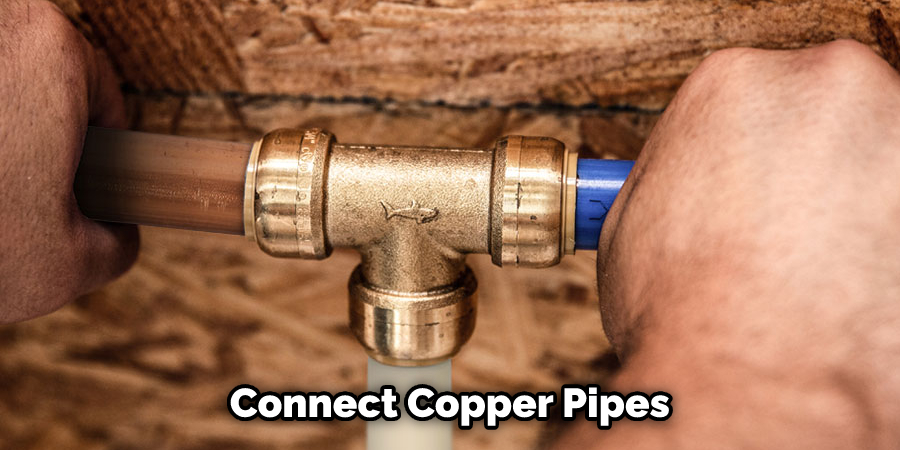
6. Turn on the Water
Once you have attached the SharkBite fitting, you can turn on the water to the affected area. Use a pair of adjustable pliers to turn on the main water shut-off valve until Water begins to flow through the pipe.
7. Check for Leaks
Once you have connected the copper pipe to the SharkBite fitting, it is important to check for leaks. You can do this by turning on the water and checking for any drips or wet spots around the connection. If you find any leaks, you can try tightening the fitting or adding pipe tape around the connection. If you still have leaks, you may need to cut out the section of pipe with the SharkBite fitting and start over.
You Can Check It Out to Fix Pinhole Leak in Copper Water Pipe
Tips and Warnings
Tips
- Make sure that you have the right size of Sharkbite for your pipe.
- Cut the pipe cleanly before inserting the Sharkbite.
- Insert the Sharkbite into the pipe and push until it is tight against the wall.
- Use a wrench to tighten the nut on the Sharkbite.
- Turn on the water and check for leaks.
Warnings
- Do not overtighten the Sharkbite, or you may damage the pipe.
- Make sure that the Sharkbite is pushed into the pipe before tightening the nut. Otherwise, it may not seal properly, and you will have a leak.
- Do not use Sharkbite on plastic pipe.
- Contact a professional plumber if you are not sure how to fix copper pipe with sharkbite.
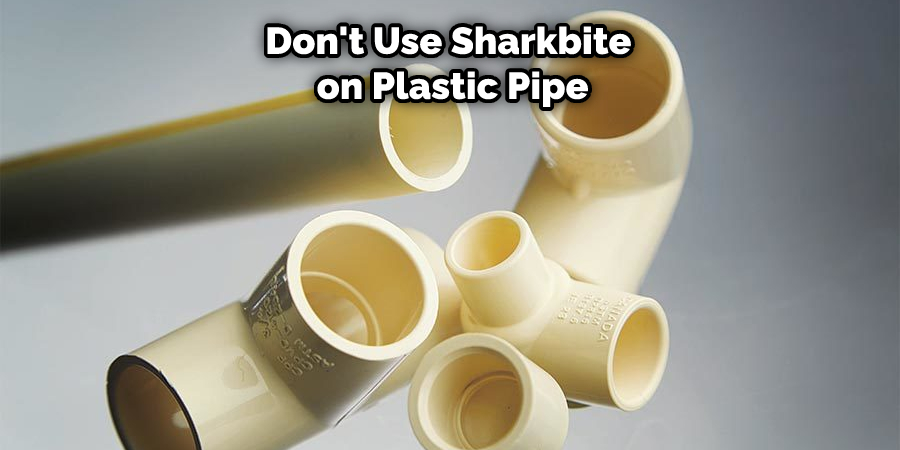
Is Sharkbite Plumbing Up to Code?
Sharkbite is a brand of plumbing fittings, tubing, and valves that has gained popularity in recent years due to its easy installation process. Rather than using traditional methods like soldering or gluing, Sharkbite relies on a push-and-twist locking mechanism that can be done with just one hand. This makes it an appealing option for do-it-yourselfers and professional plumbers alike.
However, some people have raised concerns about whether or not Sharkbite is up to code. In particular, there have been instances where the fittings have come loose, resulting in leaks. While this is certainly a cause for concern, it’s important to keep in mind that any plumbing fitting can come loose over time, regardless of the brand. The key is to make sure that you follow the proper installation and maintenance procedures.
When it comes to Sharkbite, the best way to avoid problems is to ensure that you’re using the correct size fitting for your pipe. In addition, it’s important to use a pipe wrench or other appropriate tool to tighten the fitting until it’s snug. Sharkbite can be a great option for your plumbing needs with proper installation and care.
Frequently Asked Questions
How Long Do Sharkbite Fittings Last on Copper?
Sharkbite fittings are a quick and easy way to connect copper pipes without the need for soldering. However, you may be wondering how long these fittings will last. In most cases, Sharkbite fittings will last as long as the copper pipe itself. Copper is a very durable metal and can withstand a lot of wear and tear. The only time you may need to replace a Sharkbite fitting is if it becomes damaged or leaks.
Why Do Plumbers Not Like Sharkbite Fittings?
Sharkbite fittings are a type of plumbing fitting that is pushed onto the end of a pipe to create a watertight seal. The problem with Sharkbite fittings is that they are not as durable as traditional copper fittings, and they can be difficult to remove if there is a need to make repairs. As a result, plumbers prefer to use copper fittings because they are more reliable and easier to work with.
Do Licensed Plumbers Use Shark bites?
There’s a lot of debate in the plumbing community about whether or not licensed plumbers should use Shark bites. Some believe that they’re perfectly fine to use and are a time-saving measure, while others believe that only unlicensed plumbers should use them because they’re not as secure as traditional methods.
At the end of the day, it’s up to the licensed plumber to decide whether or not to use Shark bites. If they’re comfortable using them and feel confident in their abilities, then there’s no reason why they shouldn’t. However, if they’re not comfortable using them or don’t feel confident in their abilities, then they should avoid using them.
Conclusion
This article has provided an overview of how to fix copper pipe with Sharkbite. While it’s a relatively simple process, it’s important to ensure that you’re using the correct size fitting and tightening it properly. Sharkbite fittings make fixing copper pipe a breeze. If you’re ever in need of a quick fix and don’t have any solder on hand, these fittings are the way to go. Have you ever used Sharkbite fittings before? What was your experience like? Please write a comment below and let us know.
